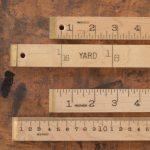Ceiling Fan Size Guide : What size of ceiling fan do I need?
Choose the ceiling fan size with the appropriate span: 36 inches for 100-square-foot rooms, 42 inches for 200-square-foot rooms, 52 inches for 400-square-foot rooms, and one 60-inch fan or two 52- or 56-inch fans for rooms larger than 400 square feet.
Thinking of fitting your rooms with ceiling fans? Don’t worry. We have prepared a detailed ceiling fan size chart and buying guide.
There are a variety of ceiling fans available in the market today. Getting the perfect fit fan has never been easy. However, by measuring the room size, ideal height, and CFM you can easily determine the blade span length of the fan to install in your rooms.
What size Ceiling Fan for low-height rooms?
Flush mount ceiling fans, also known as hugger fans or low-profile fans, are suspended from the ceiling without the use of a downrod (pole), chain, or other additional attachment.
What size ceiling fan do I need?
The recommended size of a ceiling fan is depending on the size of your room. For a room up to 75 sq. ft, the maximum diameter for the fan should be 36 inches or a range between 29”-36” (73.7-91.4 cm). Up to 175 sq. ft calls for a maximum diameter of 48 inches or a range between 42” to 48” (106.7-121.9 cm).
Sizing Your Ceiling Fan.
Ideally, standard ceiling fans have different sizes and the proper size for you can be determined by measuring the area of the room in square feet. By measuring the area of the room you can determine the best ceiling fan option to buy.
Area of the room = Length of the Room (in Feet or CM) multiplied by Width of the Room (in Feet and CM).
For Example, 12 Feet by 12 Feet = 144 square Feet
365.76 cm by 365.76 cm = 133,780.377 square Centimeters or 13.4 sqm
The ceiling fan size chart below shows the area of the room and the equivalent types of ceiling fan based on the dimensions of the blade span. A proper size fan ensures your room remains cool.
Ceiling fan installation can be done in indoor locations and outdoor living spaces. Please see the size fan chart below to understand the indoor ceiling fans and outdoor spaces fans.
Ceiling Fan Size Chart.
To be precise, the size ceiling fan depends on the area of the room in square feet or cm. For larger spaces such as Basements, Great Rooms, Open Floor Pans, large Garages the blade span has 62 inches or 157 cm measurements for proper air circulation. The room size and the equivalent blade span size have been outlined in the table below.
In this ceiling fan size guide, we have a well-researched ceiling size chart as shown in the chart below. It shows the dimensions of the room size, type of room, blade span, and cubic feet per minute (CFM).
| Room Size in Feet and CM | Area of the room | Type of Room | Blade Span in Inches and CM | Cubic Feet per Minutes (CFM) |
| Below 12 by 12 feet Below 365 by 365 cm | below 144 square feet 13.4 sqm | Porches, Utility Rooms, Breakfast Nooks, Small Bedrooms, Bathrooms. | Below 42 inches Below 106.68 cm | 1000 to 3000 |
| 12 by 12 feet to 15 by 15 feet 365 by 365 cm to 457 by 457 cm | 144 – 225 square feet 21 sqm | Kitchens, Patios, Medium Bedrooms, Dens, Dining Rooms. | 44 to 50 inches 111.76 to 127 cm | 1600 to 4500 |
| 15 by 15 feet to 20 by 20 feet 457 by 457 cm to 609 by 609 cm | 225 – 400 square feet 37 sqm | TV Rooms, Gazebos, Family Rooms, Small Garages, Master Bedroom. | Above 50 inches Above 127 cm | 2300 to 6500 |
| Above 20 by 20 feet Above 609.6 cm | above 400 square feet above 37 sqm | Basements, Great Rooms, Open Floor Pans, large Garages. | Above 62 inches Above 157 cm | 5500 to 13500 |
Measuring a Ceiling Fan Explained
Ceiling fan sizing isn’t a mind-boggling task, you can do it for yourself (DIY). The diameter ceiling fans is determined by measuring the length of the fan from the blade tip to the center of the fan and then multiplying it by 2. Alternatively, if the number of blades is even numbers take the distance between the two opposing blades.
If you aren’t getting the optimal circulation of air in your rooms you need to find out if the selection of ceiling fans was done correctly. It is worth noting that there are traditional ceiling fans and modern residential ceiling fans with innovative designs for proper air movement. Refer to the sizing fan chart above to determine if the fan body dimensions are equivalent to the room size. The blade span indicates the cubic feet per minute (CFM) and the equivalent room size to be fitted in.
It is significant that one is able to measure the fan size and the room size correctly to ensure the fan provides maximum efficiency.
The Ceiling Fan Size for Garage
Having a cool climate in your garage is vital as you may be spending a couple of hours in the garage to complete the garage work. You need comfort while working in the garage. The ceiling fan for the garage helps control the excessive moisture. The garage fans are more like the industrial ceiling fans and need to have UL damp listings.
As matter of fact, when fitting a damp-listed ceiling fan size is crucial. Standard garages require a 50 – 60 inches blade span. A garage with over 400 square feet requires a 62 plus inches blade span. See the size chart above to confirm the garage size and the recommended blade span.
The Ceiling Fan Size for Outdoor Living Space
If you like staying in a cool environment fitting an outdoor ceiling fan in your outside living space is vital. Outdoor ceiling fans ensure proper air circulation and improve the outdoor experience while keeping away mosquitoes and pesky flies.
The size ceiling fan to use in your outside living space will be determined by the size of the outside living space. Large gazeboes with an area of 15 by 15 feet and 20 by 20 feet require a large ceiling fan with a 2300 to 6500 CFM rating. Please review the size chart above.
The Ceiling Fan Size for Office
A ceiling fan can offer a sleek style to your office. However, it is sometimes difficult to determine the best fit ceiling fan for your office. A fan with high speed will blow the papers away from the desk. You need to understand the size of your office and the CFM to easily determine the perfect fan for your workspace.
The Ceiling Fan Size for Bedroom
As a matter of fact, if there is one place in your house where you should never hesitate to install a ceiling fan it is your bedroom. A fan helps ensure that the air is circulating in the bedroom creating a cool climate. A ceiling fan eliminates noise making your sleep comfortable.
If your bedroom is 12 by 12 feet and 15 by 15 feet a medium ceiling fan with 44 – 50 inches blade span is a great fit and the CFM rating should be between 1600 to 4500 for better air circulation.
Looking for room sizes for the perfect mattress? check it here
Factors Determining Ceiling Fan Airflow
Motor
The motor is a significant attribute to check during the selection of fans for your rooms. Heavy-duty motors provide perfect ceiling fan comfort, airflow, and durability. The fan motor you purchase will determine the air moisture in rooms. The heavy-duty motors have larger diameters of the ceiling blades, they are expensive to purchase but due to the durability span, the homeowners get the greatest return on investment.
Ceiling Height
The correct size of the ceiling fan blade is needed for proper air movement even for rooms with tall ceilings. For your room to have the best exposure to moisture the ceiling height should be about (11-Foot ceiling). If you have a 9-Foot ceiling height you will need a blade fan with less blade length depending on the room size.
RPM
RPM stands for (Rotations per Minute) and is a measure of the blade’s spin speed. With the right pitch and blades rotating fast you will definitely get more air circulation in your room. The speed of the fans can be set from low to high. Rotations per minute of the fan blades range from 300 – 350 RPM to 30 – 390 RPM.
Ceiling Fan Blade Size and Shape
The feet for ceilings fans need not be small or narrow as this will affect the efficiency of airflow in the room. However, the blade spans need not be long and wide as well even if you have a heavy-duty motor. To get the perfect ceiling blades for your rooms and the outdoor ceiling fans you can consult an experienced ceiling fan expert. A ceiling fan professional will save your time, money, ensure fan safety, and energy efficiency.
Ceiling fan Blade Pitch
The angle at which fan blades move through the air is called blade pitch and can be different for angled ceilings. Ideally, keeping the ideal height of the room constant, fan blades with 10 – 12 degrees flat pitch will move at a high speed without requiring a large motor. A sloped ceiling with 14 – 15 degrees steeper blade pitch will require a heavy-duty motor to attain the same speed as a flat blade pitch. A flat pitch blade at high speed will be a wobbly ceiling fan that makes noise and provides less air circulation as it is overworked. A steeper blade pitch durability is questionable if you have fitted it with a less powerful motor.
The blade’s pitch aspect ratio to the motor power should complement each other. If this doesn’t happen, the ceiling fan will use more energy to move less air and this can make the fan get damaged. Ask fan manufacturers for the ceiling fan styles which have blades and motors complementing each other.
Conclusion
In this ceiling fan buying guide, we have discussed the appropriate ceiling fan for your indoor and outdoor living spaces. A fan helps control the climate in your bedroom, garage, living space, or even your kitchen. Having a cool climate in your house is vital.
You can review the required ceiling fan accessories before making direct contact with a ceiling fan expert.
If you enjoyed reading the ceiling fan size chart and buying guide don’t hesitate to leave a comment below!
Picture in this post by rashid on Unsplash
Related House Size Charts
- Barbie Doll Size : What are different sizes of Barbie ?
- Blanket sizes chart : blanket sizes and dimensions in inches & cm
- Tablecloth size chart – What are standard tablecloth sizes ?
- How Many Meters Are In A Yard?
- How Many Centimeters are 8 Inches?
- Knife Sizes and Different Types
- 4 Inches is How Many Centimeters?
- Light Bulb Base Sizes : What size light bulb base do I need?
- Tesalate Towel Size Guide
- Light bulb Size : What are the different and standard bulb sizes?
- Duvet Sizes: What is a Standard-Size Duvet?
- Single Car Garage Size and Dimensions
- How High Is A Story?
- How Much Does 1 Cup Of Rice Weigh?
- Cast Iron Skillet Sizes: What Size Do I Need?
- Dollar Bills Size Chart
- Pizza Sizes: Which One to Order?

















